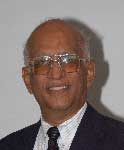 |
 |
Staying globally competitive
By : Jim Pinto, Many automation products have become commodities. Also, many global producers accept lower profit margins and that increases competitive pressures. Producing high value-added products will be part of the solution. We must continue to compete with our best assets - knowledge workers, technology, innovation, and agile response.

ISA InTech "Channel Chat", May/June 2010
|
 In today’s global markets, every business is pitted against worldwide competitors with consistently improving productivity, better performance, and shrinking prices. For automation suppliers, this global competitiveness is simply reflected back by end users with increasing demands in every direction.
In today’s global markets, every business is pitted against worldwide competitors with consistently improving productivity, better performance, and shrinking prices. For automation suppliers, this global competitiveness is simply reflected back by end users with increasing demands in every direction.
A decade or so ago, automation products involved proprietary knowledge and technology, which generated significant profit margins. Today, a lot of proprietary content has melted away, and there are few new advances. As a result, many automation products have become commodities—available from several sources with marginally different features and benefits. At this stage, the lowest cost producer usually wins. Also, many global producers accept lower profit margins and that increases competitive pressures. The significant, long-term problems we are facing in the new century require major shifts in mindset and consistent adaptation to new societal shifts. Let’s discuss ways and means for America to maintain its leadership against global competitors. Three points must first be acknowledged:
To remain competitive in global markets, it is important to keep investing in local manufacturing jobs. This does not mean replacement of the old-style, labor-intensive factory jobs; those have already disappeared in the last century. The prevailing wisdom of lower-cost, higher-volume manufacturing is clearly wrong. It is not just a question of “manufacturing” jobs. What is needed is new job creation with high-tech, high-value, innovative, non-commodity items. “Capacity” and “production” are outdated, industrial-age terms. In the new techno-driven age, it costs almost nothing to make another copy of software. The high costs of pharmaceuticals are in research and approvals, not factory production. The incremental cost of another music download is zilch; sending another e-mail costs virtually nothing. Once the equipment is in place, it costs telephone companies very little to accommodate more traffic. Innovative growth comes through new ways to generate incremental value and corresponding revenue—through things like e-mail, text messaging, music, and video. And for that kind of thing, content is vital. Knowledge rules. For new hardware and software products, when knowledge sources (research, design, engineering) are available somewhere else in the world, at cheaper prices, the center-of-gravity of the industrial world shifts. We must focus on keeping the leading edge here at home—based not on product “costs” but value generated by innovation. America has the talent and the agility to continue its leadership. We have a significant level of domestic entrepreneurship and talent. National mini-enterprise zones must be developed like “national technology parks.” The objective must be to nurture talent, ideas, and innovation as a jumping-off point for new, growth businesses. No one really wants to work in an old-fashioned factory. New work-places, including production environments, must be bright and stimulating places. Knowledge workers do not need timecards, defined working hours, and staff-sergeant supervisors. They are most effective and stimulated by a campus-like atmosphere with environment-friendly park-like facilities. Interestingly, it is the Japanese car companies in America that are advertising “green” factories and minimal waste. That attitude and those kinds of workplaces must spread everywhere. It is significant that science and engineering professionals are dangerously absent from all levels of policy and decision-making in the U.S. By default, lawyers and politicians have been allowed to take over everything. As a result, the government is manipulated by lobbying interests, and the business climate has become a political football. This has become a direct threat to innovation and job creation. On balance today, America is still the world’s premier producer of high tech products and growth services. Extrapolating high value-added trends will be part of the solution. We must continue to compete with our best assets—knowledge workers, technology, innovation, and agile response. 
|
 Pinto's Points How to win in the Automation Business Go shopping - books, electronics, CD/DVD Selected advertising coming here. Contact Jim Pinto for rates. |
Return to Index of all JimPinto Writings

 Return to JimPinto.com HomePage
Return to JimPinto.com HomePage
If you have ideas or suggestions to improve this site, contact: webmaster@jimpinto.com
Copyright 2006 : Jim Pinto, San Diego, CA, USA
